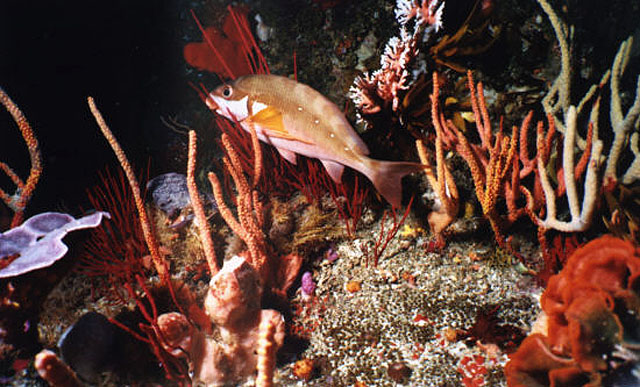| Latridae (Trumpeters) |
| 40 cm TL (male/unsexed) |
|
reef-associated; marine; depth range 0 - 240 m |
| Southeast Atlantic and Western Indian Ocean: Walvis Bay, Namibia around the Cape to Delagoa Bay, Mozambique. |
|
Dorsal spines (total): 17-18; Dorsal soft rays (total): 28-31; Anal spines: 3-3; Anal soft rays: 8-10 |
| Found in coastal waters from the shoreline to about 240 m depth, associated with reef areas (Ref. 9492) and rocky bottoms (Ref. 5319). Feeds on invertebrates (Ref. 27121). |
|
Not Evaluated (N.E.) Ref. (130435)
|
| harmless |
|
Occurs throughout South Africa (Ref. 12484). Common on Aliwal Shoal and tidepools on the south Cape coast (Ref. 12484). Often the most common edible species on heavily angled reefs in Natal (Ref. 12484). Angling record: 0.9 kg; spearfishing record 2.6 kg (Ref. 12484). |
Source and more info: www.fishbase.org. For personal, classroom, and other internal use only. Not for publication.

